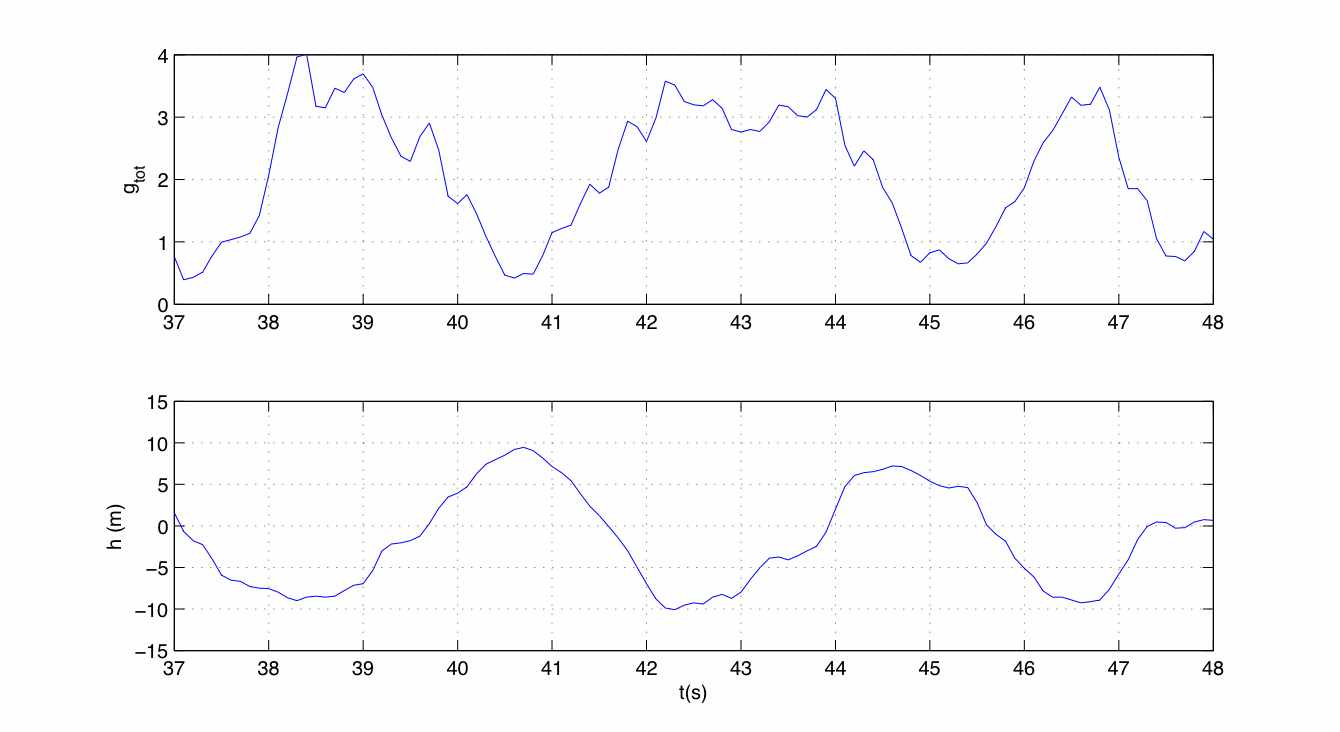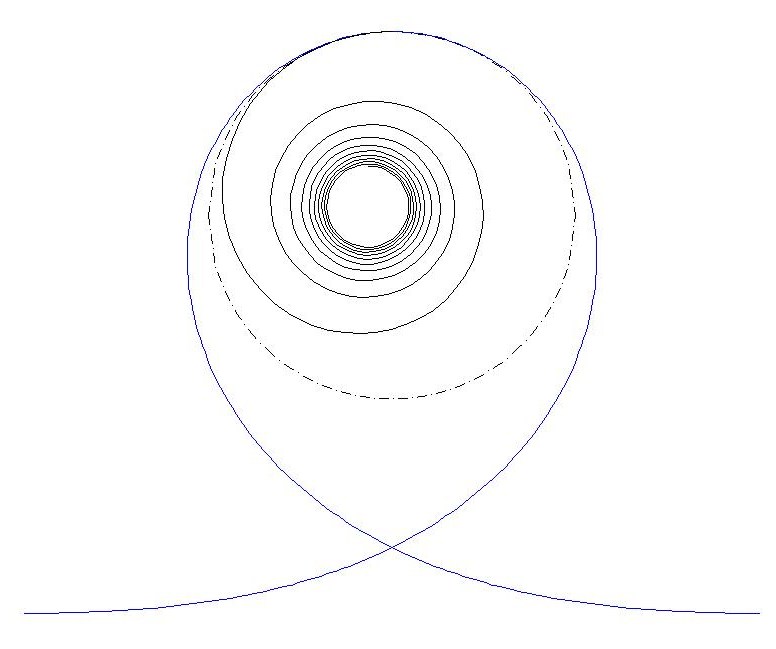



The graph above shows accelerometer and elevation data for the Dæmonen loop, followed by an Immelman. Both are shown in this picture from the Roller Coaster Data Base.
The accelerometer data shows that the rider is close to weightless at the top. This happens if the speed, v of the rider is related to the radius of curvature, r, as v2/r = g. This requires the train to start at an elevation r/2 above the highest point of the loop. (If energy losses and train length are neglected, the potential energy m g r/2 would be converted to m v2/2 ).
Compare this result from the elevation data for the whole ride. How much energy (expressed in elevation) seems to have been lost since the start of the ride?
 Look at the shape of the loop.
The upper part is a circular arc - but the rest of the loop is not. Why?
If the loop were a complete circle, the rider would be exposed to nearly 3g at the sides and 6g at the bottom. (Again, use energy conservation to show this.) From the accelerometer data in the graph, we see that the maximum g-force experienced by the rider is around 4.
Look at the shape of the loop.
The upper part is a circular arc - but the rest of the loop is not. Why?
If the loop were a complete circle, the rider would be exposed to nearly 3g at the sides and 6g at the bottom. (Again, use energy conservation to show this.) From the accelerometer data in the graph, we see that the maximum g-force experienced by the rider is around 4.
The shape of lower part of the loop is a “clothoid”, where the radius of curvature increases with the distance from the top. The clothoid is part of an “Euler” or “Cornu” spiral, described in detail e.g. in Wolfram MathWorld (The picture to the right shows a loop where the Cornu spiral starts already at the highest point.)
The loop is followed by a so-called Immelman, which starts like the first half of a traditional vertical loop. However after the top, the train instead heads back in the direction it entered.
Which place is best? Although all parts of the train moves at the same speed at any given time, the speed at a given point in the ride is different, with the middle part of the train moving slower than the front and back over the top of a hill. How much difference does it make? Look at picture of the train in the loop. Use the picture to estimate the angle of the circular arc, corresponding to the train. From this angle, we can calculate the difference in forces on the rider in the middle of the train, using the mathematical expression for the center of mass. For a circular arc corresponding to an angle 2b of a circle with radius r, the distance between the center of mass to the center of the circle is r sinb/b. An angle of 90 degrees at the top corresponds to about 0.5 g difference in centripetal acceleration.
Take a look at a movie clip of the tour in the loop and read more about loop shapes l